Seawind 1600
Sailboat specifications
The Seawind 1600 is a 51’7” (15.74m) fast cruising catamaran designed by Reichel/Pugh Yacht Design (United States). She is built since 2018 by Seawind Catamarans (Australia).
Seawind 1600's main features
- Model
- Seawind 1600
- Hull type
- Catamaran
- Category
- Offshore fast cruising catamaran
- Sailboat builder
- Sailboat designer
- Country
- Australia
- Construction
- GRP (glass reinforced polyester):
Sandwich PVC fiberglass vinylester (vacuum infusion) - First built hull
- 2018
- Last built hull
- Still in production
- Appendages
- Centerboard : twin daggerboards
- Helm
- Twin helm wheels
- Rudder
- Twin spade rudders
- Unsinkable
- Yes
- Trailerable
- No
- EC design categoryiThe CE design category indicates the ability to cope with certain weather conditions (the sailboat is designed for these conditions)
A: Wind < force 9, Waves < 10m
B: Wind < force 8, Waves < 8m
C: Wind < force 6, Waves < 4m
D: Wind < force 4, Waves < 0,5m - A
- Standard public price ex. VAT (indicative only)
- About740 000 €(2020)
Seawind 1600's main dimensions
- Hull length
- 51’ 7”15.74 m
- Waterline length
- 51’ 6”15.7 m
- Beam (width)
- 25’ 11”7.9 m
- Draft
- 8’ 6”2.6 m
- Draft when appendages up
- 1’ 10”0.54 m
- Mast height from DWL
- 74’ 10”22.8 m
- Light displacement (MLC)
- 28660 lb13000 kg
Seawind 1600's rig and sails
- Upwind sail area
- 1555 ft²144.5 m²
- Downwind sail area
- 3444 ft²320 m²
- Mainsail area
- 1076 ft²100 m²
- Jib area
- 479 ft²44.5 m²
- Asymmetric spinnaker area
- 2368 ft²220 m²
- Code 5 area
- 996 ft²92.5 m²
- Rigging type
- Sloop Marconi (square top mainsail) 7/8
- Mast configuration
- Deck stepped mast
- Rotating spars
- No
- Number of levels of spreaders
- 2
- Spreaders angle
- Swept-back (diamond)
- Spars construction
- Aluminum spars
- Standing rigging
- Dyform discontinuous
Seawind 1600's performances
- Upwind sail area to displacementiThe ratio sail area to displacement is obtained by dividing the sail area by the boat's displaced volume to the power two-thirds.
The ratio sail area to displacement can be used to compare the relative sail plan of different sailboats no matter what their size.
Upwind: under 18 the ratio indicates a cruise oriented sailboat with limited performances especially in light wind, while over 25 it indicates a fast sailboat. - 281 ft²/T26.14 m²/T
- Downwind sail area to displacementiThe ratio sail area to displacement is obtained by dividing the sail area by the boat's displaced volume to the power two-thirds.
The ratio sail area to displacement can be used to compare the relative sail plan of different sailboats no matter what their size. - 623 ft²/T57.88 m²/T
- Displacement-length ratio (DLR)iThe Displacement Length Ratio (DLR) is a figure that points out the boat's weight compared to its waterline length. The DLR is obtained by dividing the boat's displacement in tons by the cube of one one-hundredth of the waterline length (in feet).
The DLR can be used to compare the relative mass of different sailboats no matter what their length:
a DLR less than 180 is indicative of a really light sailboat (race boat made for planning), while a DLR greater than 300 is indicative of a heavy cruising sailboat. - 95
Seawind 1600's auxiliary engine
- Engine(s)
- 2 inboard engines
- Engine(s) power
- 57 HP
- Fuel type
- Diesel
- Fuel tank capacity
- 198.1 gal750 liters
Seawind 1600's accommodations and layout
- Cockpit
- Aft cockpit
- Cabin(s) (min./max.)
- 3 / 4
- Berth(s) (min./max.)
- 6 / 10
- Head(s)
- 2
- Freshwater tank capacity
- 158.5 gal600 liters
- Holding tank capacity
- 31.7 gal120 liters
- Fridge/ice-box capacity
- 71.3 gal270 liters
- Boiler capacity
- 10.6 gal40 liters
Seawind 1600's fore cabin
- Berth length
- 6’ 7”2 m
- Berth width
- 4’ 1”1.25 m
Seawind 1600's aft cabin
- Berth length
- 6’ 7”2 m
- Berth width
- 5’ 2”1.6 m


Seawind Catamarans Seawind 1600 - - 1/10
Picture extracted from the commercial documentation © Seawind Catamarans
Picture extracted from the commercial documentation © Seawind Catamarans
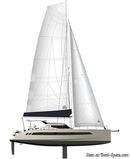

Seawind Catamarans Seawind 1600 sailplan - - 2/10
Picture extracted from the commercial documentation © Seawind Catamarans
Picture extracted from the commercial documentation © Seawind Catamarans
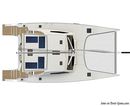

Seawind Catamarans Seawind 1600 layout - - 3/10
Picture extracted from the commercial documentation © Seawind Catamarans
Picture extracted from the commercial documentation © Seawind Catamarans
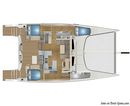

Seawind Catamarans Seawind 1600 layout - - 4/10
Picture extracted from the commercial documentation © Seawind Catamarans
Picture extracted from the commercial documentation © Seawind Catamarans
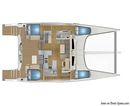

Seawind Catamarans Seawind 1600 layout - - 5/10
Picture extracted from the commercial documentation © Seawind Catamarans
Picture extracted from the commercial documentation © Seawind Catamarans


Seawind Catamarans Seawind 1600 sailing - - 6/10
Picture extracted from the commercial documentation © Seawind Catamarans
Picture extracted from the commercial documentation © Seawind Catamarans


Seawind Catamarans Seawind 1600 sailing - - 7/10
Picture extracted from the commercial documentation © Seawind Catamarans
Picture extracted from the commercial documentation © Seawind Catamarans
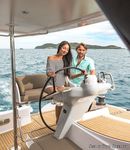

Seawind Catamarans Seawind 1600 cockpit - - 8/10
Picture extracted from the commercial documentation © Seawind Catamarans
Picture extracted from the commercial documentation © Seawind Catamarans


Seawind Catamarans Seawind 1600 interior and accommodations - - 9/10
Picture extracted from the commercial documentation © Seawind Catamarans
Picture extracted from the commercial documentation © Seawind Catamarans


Seawind Catamarans Seawind 1600 interior and accommodations - - 10/10
Picture extracted from the commercial documentation © Seawind Catamarans
Picture extracted from the commercial documentation © Seawind Catamarans
Similar sailboats that may interest you:
Sailboats
First built hull
Hull length
2008
41’ 4”12.58 m
2015
45’ 2”13.77 m
2010
46’14.03 m
2010
49’ 1”14.98 m
2009
49’ 7”15.11 m
2013
51’ 4”15.65 m
2005
51’15.54 m
2017
53’16.15 m
2011
59’17.98 m
2016
45’ 2”13.77 m
2017
61’18.6 m
2019
54’ 1”16.5 m
2017
54’ 11”16.74 m
2017
38’11.58 m
2004
41’ 6”12.65 m